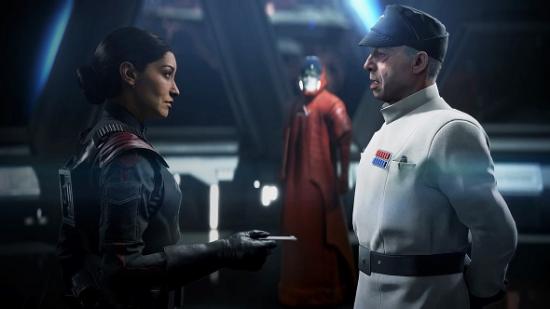During performance capture for Wolfenstein II: The New Colossus, there was a moment when two of the actors – Alyssa Preston, who plays Sigrun, and Peter Macon, who plays Bombate – needed to act out a sex scene aboard a submersible. The submersible in question, however, was just a wooden box. The actors had cameras dangling from their faces, they were covered in sensors, and wearing skin-tight suits plastered with velcro – lots and lots of velcro. For cinematic performance director Tom Keegan it was just another day in the office.
Related: The Gunsmiths – how MachineGames create the feel of Wolfenstein 2’s weighty guns.
“I’m being sensitive like, ‘Ok you guys, how you wanna do this?’,” Keegan tells me. “Alyssa and Peter were like, ‘Ok, we’re going to do it from behind’. They were trying to get into position with their headcams and Peter said ‘Where do I put my arms?’. Alyssa just grabbed his hands and put them on her breasts and was like, ‘Come on! Just get in here, baby!’.”
When I spoke to Keegan he was in the UK auditioning actors for an unannounced game. That week, two of the New Yorker’s current projects had been cancelled – again, both unannounced. Fortunately for him, he is not exactly short of work. Keegan directed the cinematics for Chronicles of Riddick: Escape from Butcher Bay, the Battlefield games, The Darkness, the Wolfenstein series, and he not long wrapped up work on Star Wars Battlefront II. Despite his prominence, however, very little is known in the wider world about his work.
“It’s kind of like what a movie director does on set, or a theatre director,” Keegan explains. “Whereas a movie director will also be responsible for all the visuals, I’m responsible for anything to do with the actor. Usually I work with a casting director. They get all the actors to do tapes or get them in for auditions, then they will send them to me and I’ll pre-screen them, then I’ll audition the actors with scenes from the game.”
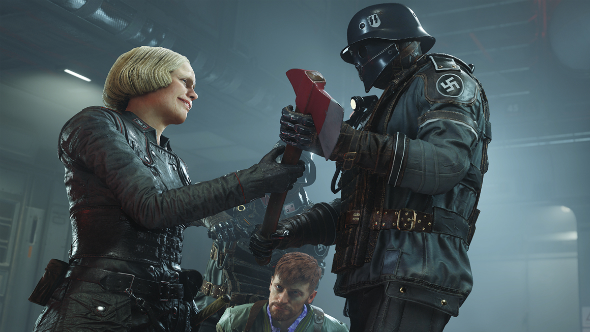
These scenes won’t necessarily be in the finished game, however. Often, as Wolfenstein II’s lead actor told us recently, the actors do not even know what they are auditioning for – at least before the new rules that were just introduced. That means they have little to go on and yet they still, somehow, need to nail their audition. They also need to be able to adapt.
“For the original Wolfenstein, we had posted [the job listing] as sort of a Jason Bourne, modern European action game, when really it was at the end of World War II,” Keegan remembers. “So people were like, ‘Can I do the scene where I’m writing on the computer?’ And I’m like, ‘Well, it’s really in WWII’. The worst thing is when you have an actor and they go, ‘Oh. Can I just do it the way I practised?’. Then I’m just like, ‘Aargh, they’re never going to work’. Because in a game there may be changes in game design up to the last minute.”
As well as being fluid, actors must be able to handle the physical side of performance capture work. Essentially, Keegan is looking for people who can jump in and out of rigged wooden sets, run around with cameras strapped to their face, or bump their velcro-covered bodies together in a pretend submarine.
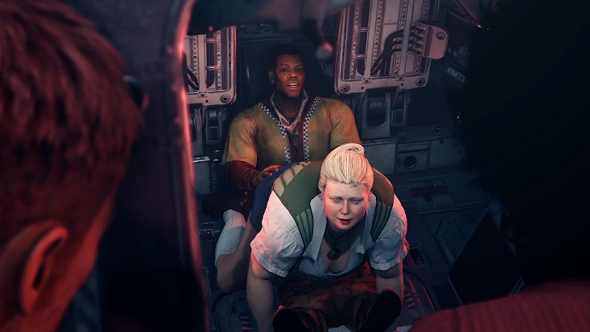
“A lot of people don’t understand the difference between voice acting and performance capture,” he says. “I want to address this with IMDb, because they automatically put ‘voice acting’ for any acting in games. So the actors are not being credited for performance capture when there’s so much more they’re bringing to it. It’s what Andy Serkis has been trying to say. There’s a talent to bringing the body into it, understanding how to use gesture.”
These job requirements are strict because of the nature of the production. In movies, if someone fluffs a line you can cut to a visual and feed the audio in later. Performance capture scenes, on the other hand, are shot from beginning to end with no cuts.
“There was a scene in Wolfenstein II – the drinking scene,” Keegan remembers. “It was difficult to shoot because it’s a really long scene and the characters are getting drunk. With the character of Paris Jack, there was another actor who had such a difficult time. He had some line like, ‘Are you from the Kreisau Circle?’. He couldn’t say Kreisau. He kept saying it wrong, and we had to stop and do the whole scene again. After like ten times we were tearing our hair out. It’s hard for the actor – the fewer lines you have in a scene, the harder it is – but eventually we replaced the actor because they weren’t flexible enough.”
Once Keegan finds the right people, he stays on set to stimulate the actors’ imaginations in the empty rooms they work in. During one scene in Battlefield 4 the game’s heroes are trapped in a sinking car. While capturing this, Keegan described the thinness of the air to the actors so that their breathing reflected that. He also pressed on them the sense of claustrophobia in this situation. Keegan’s direction changed the way they behaved, with the actors using more conservative movements and speaking in lower, calm tones to make the most of their dwindling oxygen supply.
To do his job effectively, Keegan immerses himself in these stories, in these worlds, digging into characters’ backstories and parsing their relationships. For a scene, he needs to know all of the context: the where, the why, the how, and the who. If two characters are interacting then he wants to know what their last meeting was like. What terms are they on? There are so many considerations to ensure continuity. When it is a project like Star Wars Battlefront II, there is even more to take into account, such as the context of the entire larger universe and the rules of an established, instantly recognisable world.
“I think of it as having to create a drama as strong as a West End or Broadway play with only a few days to do it,” Keegan explains. “We have one rehearsal for about every two or three days of material, and in that time we explore the characters and sketch out the staging. Also, one thing I do that I don’t think anyone else does, is that I lead a voice and movement warm up each morning with the cast. I have a lot of voice training and it’s really important to take care of the actor’s voices and get them centered in their body as well.”
Keegan is a pioneer of performance capture, which is why he understands the process so intimately. His performance capture journey began with meeting Wolfenstein II’s creative director Jens Matthies at Starbreeze, when they were both working on Chronicles of Riddick: Escape from Butcher Bay.
“Chronicles of Riddick was a really challenging project for a bunch of different reasons, mostly because it was based on a movie that was still in production,” Keegan remembers. “But [Jens and I] got along really well. I was just about to leave, because it was kind of falling apart.”
Matthies told Keegan that Starbreeze were working on a game called The Darkness, using a new recording method for cinematics – a method they had dubbed vo-cap, motion and voice capture. When offered to take part, Keegan jumped at the chance. “We kept everybody away and we did the whole game one actor at a time in performance capture,” he remembers. “It was like we were inventing the medium.”
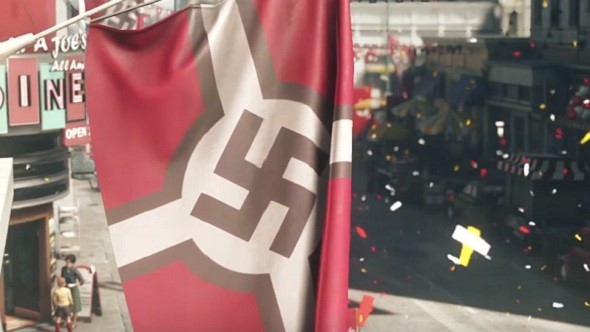
That collaboration between Keegan and Matthies has carried on between studios. When Keegan talks about Wolfenstein II, he does so with passion. He says it is the best thing he has ever done. It means something to him. In fact, the writing and performances were so strong that there were times on set where some of the crew were in tears – Keegan included.
“Brian Bloom had that incredible scene with B.J.’s father, played by Glenn Morshower, who I worked with on Battlefield 3,” Keegan remembers. “It was a very emotional scene. B.J. is really an abused child. If you’re going to do that scene right you have to be very vulnerable, and I think Brian did a brilliant job of bringing the vulnerability out in the role. I was crying during that confrontation. Brian was emotional. I was standing there and tears were coming down. It was so great.
“That was a really hard role to cast, B.J.’s father. It was tricky because he is a full-on racist. He has to actually say the N-word. I was like, ‘Man, I dunno’. But Jens, the creative director, was like ‘It’s going to be ok’. Finding an actor to really convincingly do that – we auditioned a lot of actors – I went to Glenn and asked him if he was interested in the role, and Glenn was like, ‘This character is my grandfather’. Glenn was incredible and he even brought in this line – he said his grandfather used to say, ‘You’re nothing but ten pounds of shit in a two pound bag’.”
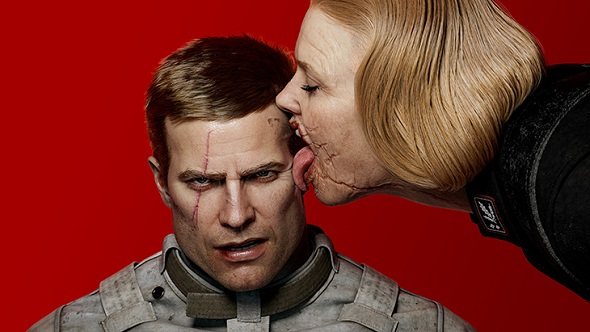
These difficult roles had caused problems in previous Wolfenstein games, however. In my recent interview with Frau Engel actor Nina Franoszek, she spoke of her initial struggle connecting to her character, how the real-world atrocities blocked her access, particularly because of her Jewish and German ancestry. Keegan helped Franoszek connect.
“That whole card playing scene on the train in the first Wolfenstein, it’s so weirdly cruel. It was a difficult game,” Keegan admits. “Then there was the whole thing where Frau Engel got her throat torn out, and finding the voice in that scene with her face torn up like that. It’s so physical. But by the time we got to the second one she was totally behind it. She brought in a lot of things. That whole thing where she puts the gun in B.J.’s mouth where he’s tied up, she brought that in. She did a lot of research into the Nazis and some of the sexual fetishism of it.”
After working with such heavy themes for so long, you would think a licensed game like Star Wars Battlefront II would be the perfect palette cleanser. But Keegan’s time working on Chronicles of Riddick soured his appetite. “Part of it is when you’re working with a movie there are certain actors you have to use, and there are characterisations that might not fit into a game structure,” Keegan explains. “Then you have a movie star and a movie star schedule – a very demanding movie star. The more stakeholders there are the harder it is.”
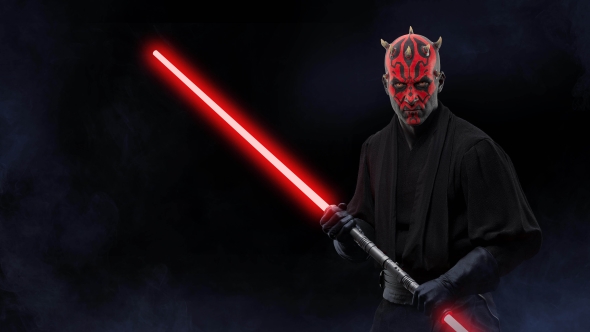
In fact, his memories from working on that project had lead to him saying in a previous interview that working on Star Wars would be his worst nightmare. Yet, here he was, working with Battlefield developers DICE once more, only this time in a galaxy far, far away. Fortunately for him, his experience on the set was also far removed from the events at Vivendi that long time ago.
“I thought Lucas and Disney were going to be up our asses about every single thing, but they weren’t,” Keegan says. “There was always a Lucas person on the set. Steve Blank and Orion Kellogg were there – they were brilliant. They just really contributed to allowing us to do a lot of improvisation. [Lead actor] Janina [Gavankar] was really great in wanting to bring a lot of things to the character. Motive were great for letting actors improvise. The writer, Mitch Dyer, was also there. When you have all those people on the set and they’re all willing to be flexible, it’s so great.”
Lucas were essentially on set for continuity reasons, making sure the developers don’t kill off Luke Skywalker, or ensuring existing characters walk with a specific gait. For the famous faces of the Star Wars films, stand-ins would research their body language to capture their mannerisms, mimicking the predatory prowl of Adam Driver’s Kylo Ren, for example. Despite the strictness of the universe’s established components, however, the actors, writers, and Keegan were free to suggest script tweaks.
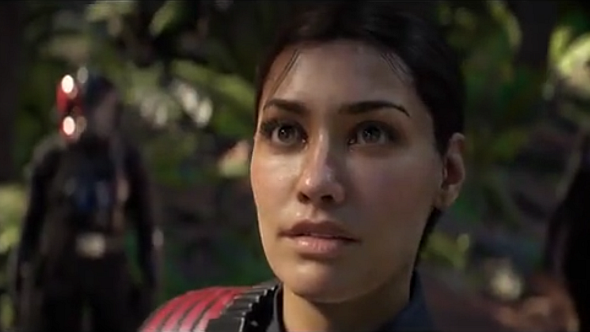
“Janina brought in really great material herself. We’d improvise around and it would always be really good,” Keegan remembers. “People have talked about the role of her father being such a mean guy, such a villain, but in fact was it was written even more villainous. When we got to filming we were like, ‘They have to be close, there has to be some connection between them, a father and daughter connection’. It made him seem more of a real character.
“Janina is dedicated to games, she takes it seriously. She’s a fine actor and brings so much of herself to it. She can relate to the developers. I’ve had actors in auditions go ‘This is for a videogame, right? I shouldn’t take it too seriously’. Which is really suicidal – especially if one of the developers is in the room. Janina knows how important it is. It was a dream working with her.”
When asked what a movie director does, Polish arthouse movie director and screenwriter Krzysztof Kieślowski famously replied, “I help.” That is essentially what Keegan is there to do, and he does so with similar modesty. He is the conductor for an orchestra of lycra-clad actors, making sure everyone and everything is in tune in their abstract surroundings. If the production was a giant mocap suit, Keegan would definitely be the velcro.
